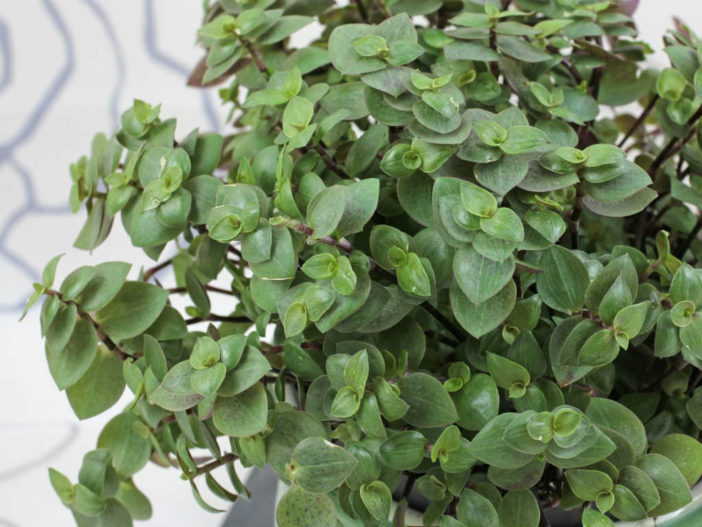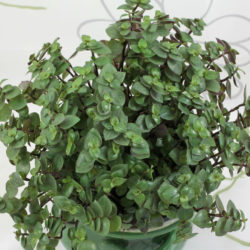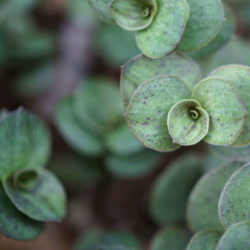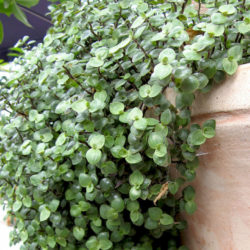Scientific Name
Callisia repens (Jacq.) L.
Common Name(s)
Bolivian Jew, Creeping Basket Plant, Creeping Inch Plant, Inch Plant, Turtle Vine
Synonym(s)
Callisia hexandra, Hapalanthus repens, Tradescantia callisia, Tradescantia repens
Scientific Classification
Family: Commelinaceae
Genus: Callisia
Description
Callisia repens is a much-branched, mat-forming succulent with 2-ranked leaves gradually reduced toward the ends of prostrate stems. The stems can grow up to 10 inches (25 cm) long and 0.08 inches (0.2 cm) in diameter, rooting at the nodes. The leaves are dark green, often purple below, smooth except for the scabrid margin and apex. They are heart-shaped to lance-shaped, measuring up to 1.6 inches (4 cm) long and 0.6 inches (1.5 cm) wide.
The bisexual flowers are small, white-hyaline, and appear in dense axillary paired cymes, enclosed by the sheath and leaf bases, usually in summer. The fruits are 2-locular capsules that contain two brown seeds per locule.
Origin
Callisia repens is native to the United States (Texas), Mexico, Central America, West Indies, and South America. It grows in subtropical to tropical forests in shady, rocky, or gravelly spots.

Hardiness
USDA hardiness zones 8a to 11b: from 10 °F (−12.2 °C) to 50 °F (+10 °C).
How to Grow and Care
Growing Tradescantia is easy, and you will find the plants quite resilient. These plants typically grow in moist, well-drained, and acidic (pH 5 to 6) soil. Tradescantias do best in partial shade but will do equally well in sunny areas as long as the soil is moist.
You can grow Tradescantia indoors as long as suitable conditions are given. Provide the plant with a soilless mix or loam-based potting compost and keep it in bright filtered light. You should also pinch out the growing tips to encourage bushier growth.
Allow it to spend warm spring and summer days outdoors, if feasible. Water moderately during active growth and apply a balanced liquid fertilizer every four weeks. Water sparingly in winter.
These plants like to be kept fairly moist, so water regularly, especially when growing in containers. Cutting the plants back once flowering has ceased can promote a second bloom and help prevent re-seeding. Cut the stems back about 8 to 12 inches (20 to 30 cm) from the ground.
See more at How to Grow and Care for Tradescantia.
Cultivars
Links
- Back to genus Callisia
- Succupedia: Browse succulents by Scientific Name, Common Name, Genus, Family, USDA Hardiness Zone, Origin, or cacti by Genus
Photo Gallery
Click on a photo to see a larger version.


